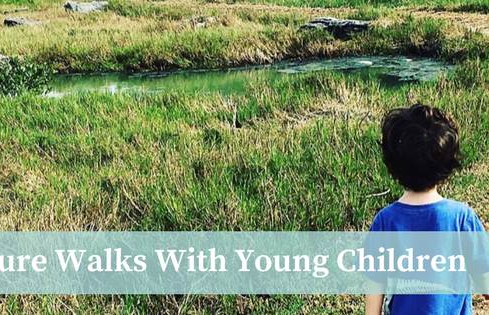Nature Walks: Explore and Wonder

Spring is a great time in Bermuda to get outside, enjoy the fresh air and get some exercise. Going for a walk out in nature is great for the body and relationship building. Similarly, this time can also double up as a valuable learning experience if we are intentional with our children about helping them to notice the science in nature right in front of them.
Here are three easy activities you can do while out (anywhere) on a nature walk to encourage curiosity and build science knowledge. Following the descriptions of the activities, you’ll find some suggested places to go explore with your child.
-
Focus on the five senses
Being outside is a great time for children to discover through their five senses, and we are so blessed that in Bermuda we can explore the outdoors with ease year long! Take time to notice what you can hear. Do you hear the leaves blowing? What other sounds do you hear? Do you hear different types of bird calls? How are they different?
What do you notice about the leaves when you look at them? Are some different than others? This could easily lead to a compare and contrast type of activity (you don’t have to use those terms with your children – although you could because if explained, they will understand). See if you can notice leaves that are similar. Can you sort leaves by size, by color, by shape?
Ask your child what he or she can smell. Do different leaves have different smells? Discuss why different plants have sweet smells and why some might have repulsive smells.
How do the leaves feel? Notice that some may feel fuzzy. Other leaves feel thick and smooth. A local guide to the various plants in Bermuda may be helpful to avoid touching any plants that sting.
-
Make a list of “wonderings”
On your nature walk, show your children the different things you notice; model ‘wondering’ for him or her aloud. Your modeling of “wondering” and asking questions will them to also think and ask questions, too. Your child will probably have many questions of his own. It would be great to list them for further study or research. This activity leads to “inquiry-based learning” – learning that the child initiates through his or her questioning.
-
Notice different habitats
See what creatures you can notice and discuss habitats. What do you notice about the animal’s habitat? Is there a food source? Why would the creature like living there? Introducing these terms and ideas, even with young children, is going to help them grasp the concept and they’ll begin using the terms in their everyday talk. Then, when the concept is introduced in school, your child will have the background knowledge to make the connections which will help to cement his or her learning.
Fun Places to Explore
So now that you know what to do on your nature walks, where should you go? This is just a suggested list of some places locally that are fun to explore.
1. Spittal Pond
Spittal Pond is an excellent place to explore with children due to the fact that you can find a variety of habitats in one location. Here you can observe tide pools on the rocky coast, the brackish pond, the marsh and some freshwater ponds. It’s a great place to notice different types of animals and plants in the different habitats.
2. Coopers Island
Again, you have an example here of a location with a variety of habitats in one space. You can explore the beach and the salt marsh area, keeping an eye of for a variety of different types of birds. Make sure to take your swimsuit if it’s a beautiful day!
3. Walsingham Nature Reserve and Blue Hole Park (Tom Moore’s Jungle)
Here you can observe mangrove ponds, adventure through the woodland, and have a look at the caves. If you have older children and you’re able to get into the lagoon, you’ll be able to observe mangrove crabs busy at work.
4. Hog Bay Park
Take a pair of binoculars with you when you head to Hog Bay park as this is a fantastic area for birdwatching. I would recommend taking a friend along for this walk (especially if you have children under 3) as it can be long walk on rough terrain. You may want to use a baby carrier for a toddler on this walk.

5. The Railway Trail
The railway trail has to be one of the most accessible areas for observing nature in Bermuda. Take time to explore it in different locations. See if you can notice different types of plants in different areas along the trail.

